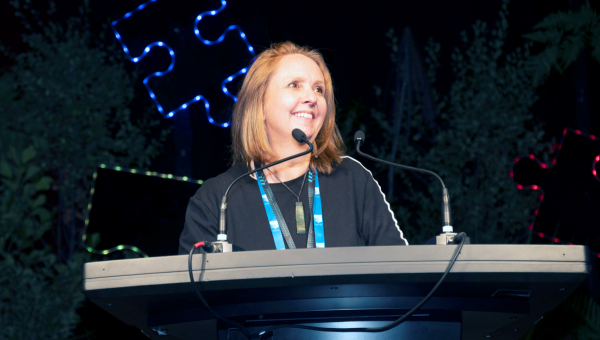Boardroom Premium


New school board members need a clear induction, shared goals and collective decision-making to govern effectively.
Thousands of parents, caregivers and community members have just stepped into one of New Zealand’s most important civic roles: serving on their local school board. For many, it’s their first experience in governance. And while passion and care for students are key drivers, school board work requires something more – clarity of purpose, teamwork and a shared understanding of what governance means.
Meredith Kennett CMInstD, President of Te Whakarōputanga Kaitiaki Kura o Aotearoa – the New Zealand School Boards Association (NZSBA), says it’s not unusual for new board members to come to the table full of ideas – but not yet equipped with the frameworks to turn those ideas into collective, strategic outcomes.

Meredith Kennett CMInstD
“If you’ve brought along an agenda, it’s probably not going to work so well because you’re one voice in a team,” she says. “The collective decision is what’s really important.”
That shift – from individual advocacy to collective stewardship – is core to board culture. While new board members may feel eager to make a difference, Kennett urges them to first get grounded in the basics. That includes understanding the distinction between governance and management, learning how meetings work and taking the time to build strong relationships across the board.
“For most people, a good place to start is some basic reading on what governance versus management is,” she says. “That first board meeting should really be an induction of those things – what it means to be in the governance position.”
Some of that early orientation may come from returning board members. But in some cases – especially after an election – boards may be made up entirely of new trustees. In those situations, the principal becomes a key player in setting the board up for success.
“If you’ve got a presiding member who’s stayed on, or if your previous board has left behind some induction material, that’s ideal,” says Kennett. “If not, then it’s up to the principal to support that process – covering things like the school’s values, the strategic plan and what those things mean at a governance level.”
One of the biggest risks for new boards is rushing into decision-making before they’ve had the chance to build trust and alignment.
“It can be tempting to get straight down to business before you've taken the time to build that base level,” says Kennett. “Then before you know it, you’re three school terms in and haven't understood each other’s strengths or possible gaps in skill.”
That’s where training comes in. NZSBA offers two core courses for board members – Welcome on Board for all members and Leading an Effective Board for presiding members. Kennett encourages new board members to enrol early.
“Those courses are really designed to give you that foundation, so you can start from a place of knowledge – not guesswork.”
Clarity around boundaries is equally important. Boards must work as a team, but they also need shared expectations on how they’ll behave, communicate and make decisions. Without that, misunderstandings can erode trust and slow progress.
“Unless you make boundaries really clear, people don’t know what they are. They’ll just assume,” says Kennett. “Things like agreeing how you’ll run meetings, what’s OK and what’s not OK – it all needs to be spelled out.”
Beyond board culture, board members will also need to get across strategic planning requirements. Following recent reforms, the old charter system has been replaced by a lighter-touch strategic planning framework – but boards still need to consult widely and engage meaningfully with students, whānau and iwi.
“You need to consult with your community and bring in the voices of teachers, students, parents and iwi – all of that informs your strategic plan,” she explains. “But that obviously takes time – and for a new board to pick that up right away is a big ask.”
Uncertainty around further education reforms has added complexity. But one thing is clear: the board’s responsibility for student achievement remains central.
“Student achievement is always going to be an important part of a board’s role,” says Kennett. “To support that, you need to monitor attendance, health and safety and how your school is giving effect to Te Tiriti o Waitangi.”
She also encourages boards to recognise the emotional and mental load school staff are carrying – especially in today’s challenging environment.
“The stress levels of our teachers and principals at the moment are a health and safety concern,” she says. “Boards need to consider how this is affecting staff. Absenteeism, burnout – those are indicators you need to take seriously.”
But she’s also quick to reassure new board members: you don’t need to know everything.
“You don’t have to be the expert. Your job is to understand what you’re not the expert in and bring in advice.”
That might come from organisations like NZSBA, the Ministry of Education – or from networking with other boards. In fact, that’s one of the great advantages of the school board system: more than 2,500 boards across Aotearoa are facing similar challenges.
“If you care about kids, that’s a really great start,” she says. “And from there, it’s about asking the right questions.”
Kennett says she’s encouraged by the number of people who put their names forward this year.
“We had nearly 15,000 nominations across the country. One school in Auckland had over 40 people standing for five positions. It’s really heartening to see that level of interest.”
She sees school board service not only as a community contribution – but also as a gateway into wider governance.
“It is a great chance to start off a career in governance. I don’t know if people have really considered that before.”
Above all, Kennett wants new board members to remember they’re not alone.
“You’re part of a team. If you’re unsure, reach out. That’s what we’re here for.”
As part of the IoD’s commitment to building governance capability across all sectors, we have established a School whole board membership offer to help support the work of school boards. The offer includes a 33% preferential rate on each board member’s annual subscription with no join fee. This offer is available until 31 December 2025, and boards that sign up during this period will retain the preferential rate for the duration of their tenure with the IoD.